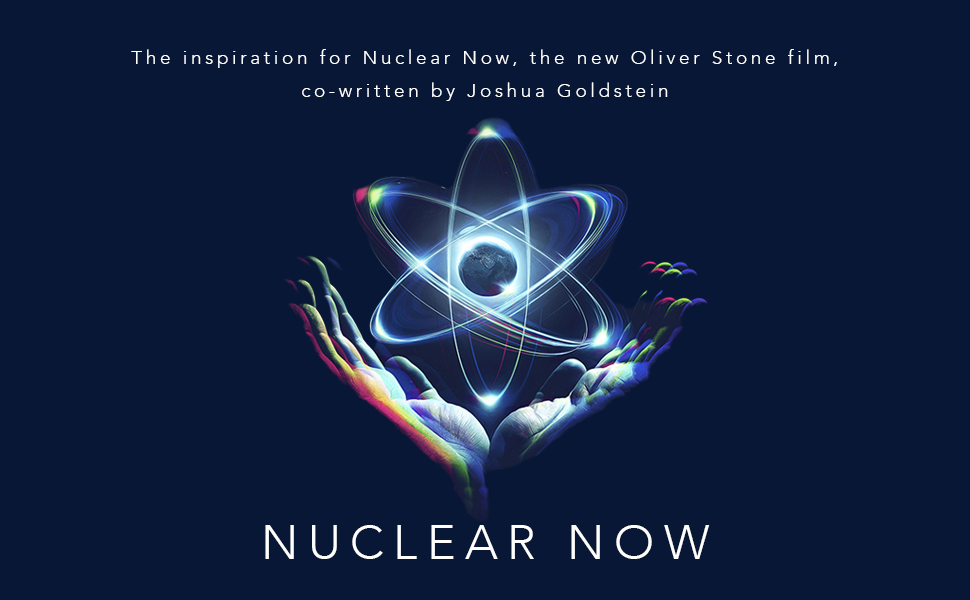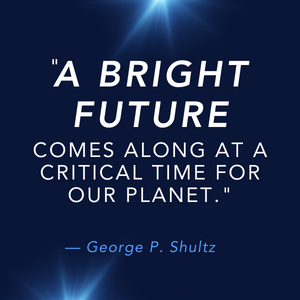Customer Services
Copyright © 2025 Desertcart Holdings Limited
Desert Online General Trading LLC
Dubai, United Arab Emirates


A Bright Future: How Some Countries Have Solved Climate Change and the Rest Can Follow




A**R
Great book for general concepts and for convincing people nuclear power is the way to go
If you’re interested in a book that gives you a mostly realistic view of how to implement nuclear power in order to tackle climate change, then A Bright Future does a pretty good job. While I disagree with a few pages/lines that seem to be “apocalyptic” about the effects of climate change and how fast we need to act, it didn’t go as overboard as I expected it to. This book provides a very quick overview of climate change and its problems, which is really all you need in order for this book to be effective.I don’t want to provide any spoilers, but how they introduce nuclear power is actually pretty funny/cool. I was like “what are they talking about??” for the whole chapter, until finally it clicked. Haha. The book basically gets broken down into a few countries/regions that are doing things right when it comes to climate change/nuclear power (Sweden, France, Ontario) and compares them to the rest of the world. While this isn’t the most fair comparison (due to geographic differences, population differences, and others between the countries), it does get the point across and makes the reader actually contemplate things. The book really opened my eyes to the failures when it comes to other countries, like Germany (phasing out nuclear power when it has tons of coal to get rid of), and how the only alternative to nuclear power is either hydropower or fossil fuels (mainly because nuclear power can provide on-demand power) and the only other fuels that can do that are hydro and fossil fuels; Solar/wind are highly dependent on the weather and are not reliable enough to be strictly coal replacements). This means that we need to essentially always compare nuclear power to fossil fuels (as hydropower is super geographic dependent). Therefore, when compared to coal/methane, for the most part, nuclear power always wins. Whether it be energy cost, efficiency, waste production, manpower, maintenance, safety, etc, nuclear power almost always wins (things like upfront costs are higher for nuclear power, but I’m ignoring those because this is clearly a long-term investment). There are some sections dedicated to how certain countries (like China and Russia) are doing a good job at building more power plants (or at least more efficient ones), but other sections that recommend other solutions to these countries in order to expedite their reliance on nuclear power.In the last third of the book, the authors spend a good amount of time “debunking” some myths, with the biggest one being safety. I was always skeptical when it came to safety, but after reading this book I’m convinced the lives lost due to fossil fuels every year is much higher than that from nuclear power. It goes even further to “poke fun” at the antinuclear activists who want the plants to shut down, but who also want “zero emission energy”. The authors make a good pitch as to why these activist groups are highly mistaken and are being scientifically daft. For example, Germany started shutting down its nuclear power plants due to Fukushima, but the book makes it clear that this was solely an emotional response and not one based on sound science.The book is a super easy read and could honestly be read within a few days if you dedicate a few evenings to it. While I don’t know how scientifically accurate it all is (as I didn’t go too deep into the references and I’n not a nuclear power expert), it does make some upfront points that I agree with as a fellow scientist. I would highly recommend this book to anyone looking for a good overview of nuclear power and how it can alter the path of climate change for the better in a relatively short amount of time. Of note, this book isn’t super helpful if you really want some in-depth knowledge on nuclear power and the different types and all of that. I would still read this book first though as it covers the general concepts.
R**S
The only option
I think that most environmentalist Recognize The value Of nuclear. This book explained Why it is the only option And a very good oneindeed. It also points out That the safety Reluctance Is totally unfounded.
E**R
Fairly general overview of nuclear power as a possible solution to catastrophic climate change.
This book is mainly a broad overview of the issues with not including nuclear power if we are serious about mitigating catastrophic climate change. It is written for lay audience and is a fairly general overview of why the authors think that nuclear fits in the solution, not a definitive book on the subject.According to the authors what we need is ‘not less energy, but cleaner energy’. Their vision is for non greenhouse gas emitting energy cheap enough so that the poorer people of the world can rise out of poverty and those of us who have plenty of energy can use it in the same amount. They propose “nuables” (nuclear + renewables). Ultimately what they ask is this: If nuclear isn’t that bad compared to fossil fuels why don’t we push for a massive nuclear build now instead of continuing to build up fossil fuel infrastructure hoping for better battery technology to replace them one day and then when renewables and large scale battery technology are stable and reliable as nuclear is today then switch over?Now, that may sound like a logical solution if one is sold on nuclear being safe, cheap and scalable but nuclear power is perceived as dangerous, uneconomic and renewables are considered by most as superior clean sources of energy anyways. The book contends that nuclear if done right (their model is Sweden, France and South Korea) does in fact tick all those boxes and offers a good alternative to fossil fuels. It does a pretty good job at arguing for that cause but it is overly shallow and simplistic at times with nuclear portrayed as almost perfect and almost everything else (especially fossil fuels) terrible in comparison. All in all I think the book is pretty good for what it’s intended to be and would hand this book to someone interested in learning more about the subject.
A**R
A highly readable documentary on how decarbonization of electricity has actually happened.
First, if you want to geek out on a detailed, in depth look at technology or policy, this is probably not the book you're looking for (though I would still recommend reading it). This is a very approachable story of how some large electric grids have been basically decarbonized, in relatively short order, at relatively modest cost, with existing off-the-shelf technology. But it's not only the story of what has been, but what could be (hence the title). Yes, we have some significant hurdles to get over before we can replicate the success of Sweden, France and Ontario, but our grids *can* be cleaned up, and we *can* do quickly. We are not going to avoid all the ravages of climate change no matter what at this point, but to make the biggest dent, we need to pay attention to the success stories out there, and learn from them. That's the message of this book -- we don't have to hope for a solution, we just have to implement it. There is enough detail in here to make it interesting to the technically-focused reader, but it is all easily digestible by any reasonably-intelligent lay person. No advanced degree required. And it's a fun, uplifting read. The only issue I really had was that I think it's a little too easy on wind and solar, which do not have any success stories of their own, in my view. The term "nuables", a contraction of "nuclear" and "renewables" is used to make the point that we need both of them. But hey, if you're rolling out a bunch of nuclear, it's not that much of a stretch to add one more reactor instead of a whole state full of solar panels and wind turbines, and you wouldn't have to deal with the intermittency. But, I digress.I recently re-read this book after suffering from a minor bout of depression, and indeed, doing that did make a bit of positive difference in my outlook. I think you'll like it too, and you will probably learn something as well. Highly recommended.
Trustpilot
1 day ago
3 days ago